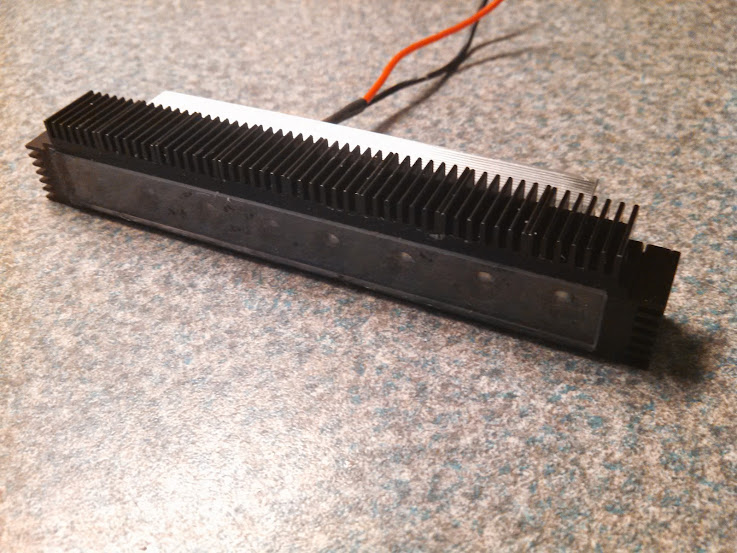I decided to try my hand at something other than LED flashlights...
I bought a new (used) car recently which did not come equipped with a set of OEM LED DRL’s that are becoming mainstream these days. So what to do? Put my flashlight skills to work and come up with a custom solution.
Pictured are some of the components used to assembled this DIY LED DRL. A complete list is below.

Parts list
- Aluminum U-channel
- Aluminum flat bar
- Nichia 119
- 14mm XPG/XPE PCB
- Plexiglass
- PC heat sinks (from here and an old UPS)
- LuxDrive Buckblock with potentiometer
- Solder, wire, JB Weld, thermal paste, etc
The plan was to use 8 x Nichia 119 for each DRL wired in parallel with the two sets wired in series (2s8p). The Flexblock can supply a maximum of 2A, so each LED would be getting 250mA. I did some initial bench testing and found this would be plenty of output to be visible without blinding oncoming traffic. I could always throttle the output back using the wired pot if needed.
Reflowing the emitters was done on a hot plate. The boards need to be sanded down slightly to fit inside the aluminum U-channel. I also needed to electrically isolate the center solder pad with kapton tape as the Nichia 119 + and - pads would overlap causing a short.


Testing each after reflow

The DRL housing was constructed from aluminum U-channel cut to size. The end caps were made from aluminum flat bar stock cut and secured with JB Weld. After reflowing onto the boards, 8 emitters were secured to a piece of aluminum flat bar with arctic paste and soldering in parallel. The emitter “strip” could now be slid down into the DRL housing. The fit was nice and snug. Additional thermal paste was used between the emitter strip and aluminum housing. Wire holes were drilled out the back side.
DRL housing

Test fit with emitters before wiring

Emitters mounted onto aluminum flat bar and wired in parallel


The “reflector” was fabricated out of the same aluminum flat bar. Holes were drilled to match the spacing of the emitters. They were made slightly larger than the emitter dome, and flared out at the top. To prevent shorting, Kapton tape was added to the bottom side which sits flush against the emitters.


The main components complete

Both sets assembled

Some initial bench testing.

Room lights off. Running at low power.

Room lights on running at ~1A

Even running at ~250mA/emitter, the DRLs got warm after a short while so required some additional heatsinking. A heat sink was cut from a piece salvaged from an old battery backup and glued to the back side of the DRL. Additionally, smaller 14x14 heatsink squares were attached to the top and sides.
Heat sink for the back


Cutting off a piece was no easy task

Test fit with wires fed through


The heat sink was attached using both arctic adhesive (in the middle) for heat transfer, and JB Weld along the perimeter for extra strength.

Since the heatsink fins on the backside would not catch much air passing through, I also mounted smaller heatsinks along the top and sides to improve cooling.
Final assembly and painted black.

The last thing was to install the plexiglass front cover. Since this was designed as a press fit (very tight), I had to make sure everything was right since it would be nearly impossible to remove.
Final product ready to mount.






That's it for now.
Next post will have the install onto my car and some photos of it in action.


